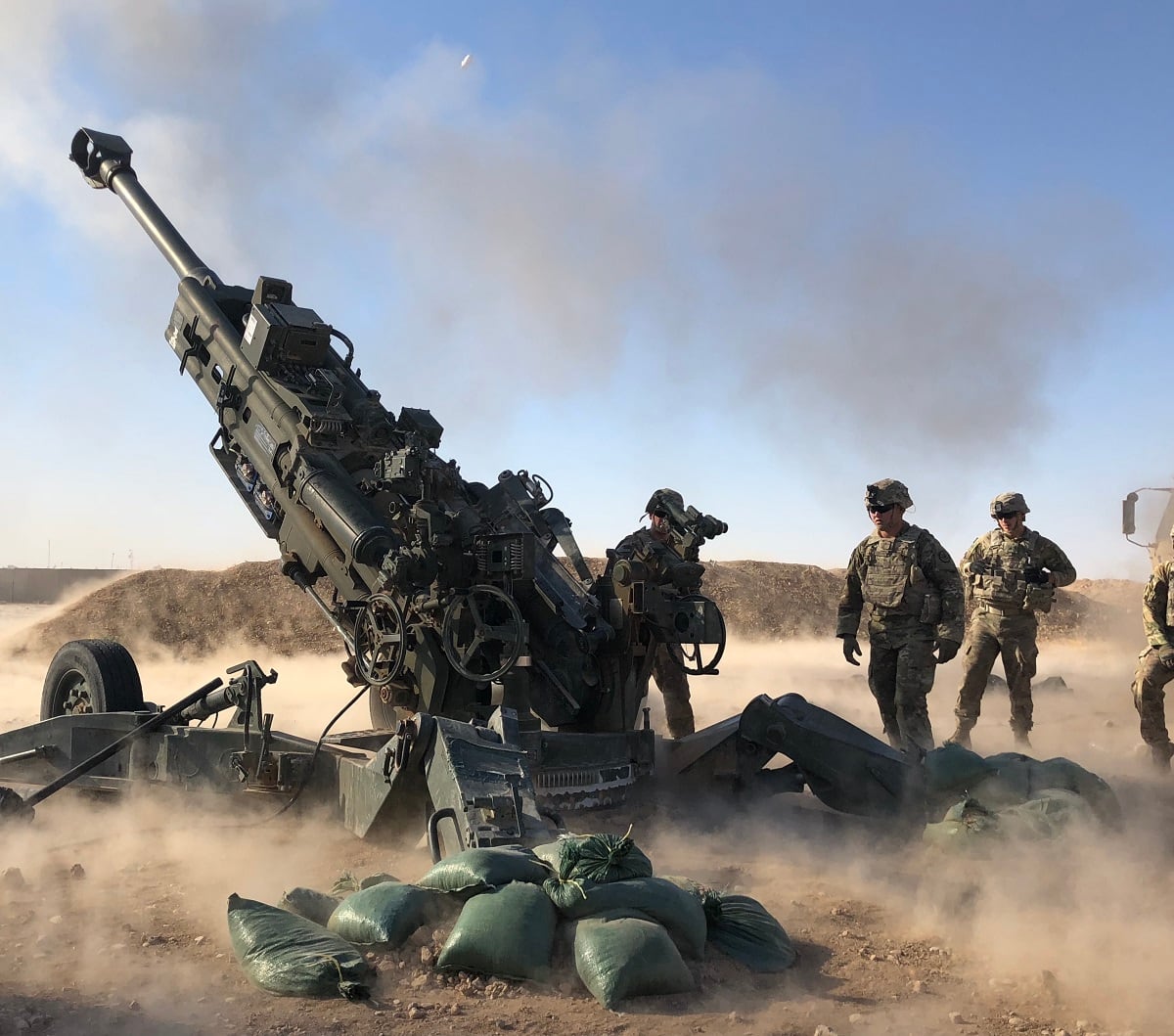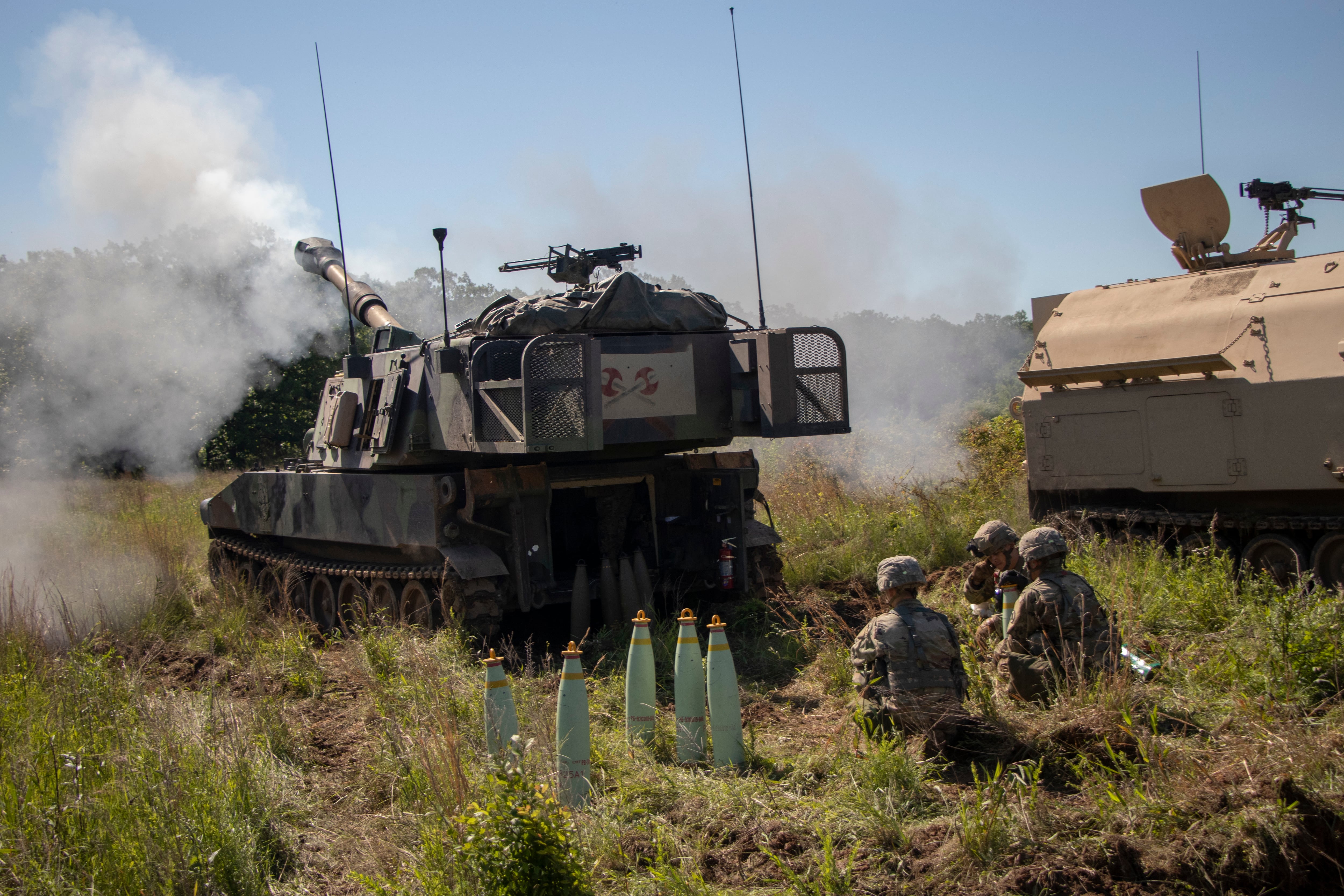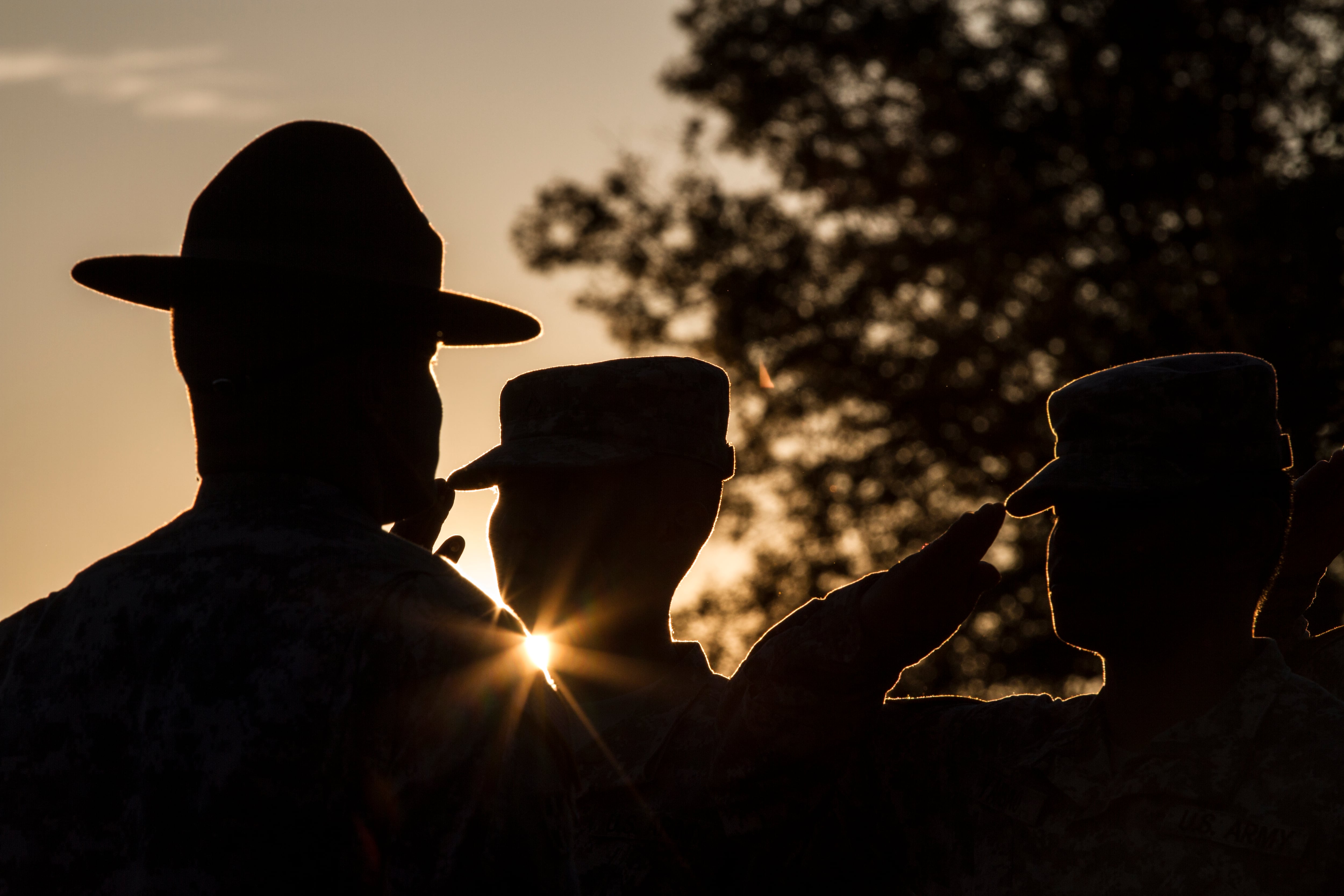The Army is looking for ways to automate resupply for its self-propelled artillery pieces that would cut crews by half and double the rate and volume of fire.
Work being done now could transform how self-propelled artillery operates.
At an event this week in Austin, Texas, home of Army Futures Command, the director of the Long Range Precision Fires Cross Functional Team, Col. John Rafferty, told a group of small business professionals that while the Army is shooting to have an autoloader in the M109 Paladin 155mm howitzer the real problem then becomes how to resupply that vehicle.
And keep soldiers safe while doing it in a near-peer battlefield where everything’s under threat.
RELATED

Because right now it’s soldiers such as Spc. Wyatt Sanders and Spc. Shantez Cosey with the 3rd Battalion, 16th Field Artillery Regiment out of the 2nd Brigade Combat Team, 1st Cavalry Division at Fort Hood, Texas that have to crack open 900-pound pallets of 155mm rounds, load them onto a flatbed-type vehicle, then move them to the firing line and manually pick up each 97-pound round for firing.
Both specialists were on hand to explain to the civilian and uniformed visitors what exactly their day jobs were like.
Sanders said sometimes they’ll have to haul the projectiles by hand up to 500 yards over rough terrain as many as 50 times a day.
The event opened up the Army Applications Lab to industry to solve some key questions. But that matters most to soldiers firing 155mm shells in a host of ways.
Maj. Chris Isch, the LRPF CFT action officer, explained that the plan is to integrate the autoloader to automatically load the howitzer from a magazine with a specific shell, fuse and propellant into the breach, close the breach and fire the cannon.
That will require sensors that can confirm the proper round was loaded, that the cannon fired and that it’s clear for another round, he said.
And those sensors will need to do all of those tasks at lightning speed.
That’s because the Extended Range Cannon Artillery program that’s transforming the Paladin expects it to fire a magazine of 30 rounds at six to 10 rounds per minute. Meaning, it could empty in three minutes.
Then what?
That’s what this week’s event was trying to tackle.
Isch dove deeper into the details of some of what the Army wants from an autonomous resupply.
First, the Paladin, which now holds four soldiers, will likely see half those jobs go away as the cabin is fitted to the future autoloader. That means potentially two soldiers in the cabin.
And that Paladin will have to communicate, though how hasn’t been defined yet, to the resupply vehicle to tell it what it and its crew needs.
That’s because other than rounds, the vehicle will need fuel and the soldiers will need food and water to do extended fire missions without leaving the safety of their armored protection.
The resupply portion affects the chain in novel ways.
For example, it will mean changes to how the Carrier, Ammunition Tracked or CAT is used. Developers will need to see how best to move a massive pallet of packaged and banded 155mm rounds off of a flatbed transport onto the CAT and then get the CAT to the vehicles in need.
“At some point we receive eight of those palletized rounds,” Isch said. “At some point the soldier has to cut those bands, unpalletized and then manually transfer them to the vehicle then load them manually from that.”
It’s a little more complicated than a forklift.
ERCA is looked at now as a division-level asset, Isch said. Mostly it will perform in a general support type role initially.
But it will be operating in a battalion formation with three batteries and that battalion will have its own forward support company, he said.
There’s potential for it to operate within a BCT independently but that’s not yet being considered for current development, Isch said.
While the ultimate goal is to have either a semi-autonomous Paladin-like artillery piece controlled from afar or multiple such items controlled by another vehicle on the firing line with soldiers inside, the Army hasn’t quite gotten down to that level yet.
Though the Army is working a similar kind of scenario in breaching. AFC commander Gen. Mike Murray told reporters earlier this month that recently soldiers had done complex breach using robotic combat vehicles controlled from a distance at Yakima Training Center, Washington, without a “single soldier in an Army vehicle.”
That is part of another CFT, the Next Generation Combat Vehicle, and has plans for a platoon-sized version in 2021 at Fort Carson, Colorado using a Bradley Fighting Vehicle as the controlling platform. Follow-on plans include company-sized scenarios.
On the LRPF side, they’ve already tested a longer barrel, adding nearly 10 feet to the cannon to extend ranges and years’ worth of research is pushing the munitions ranges and accuracy, Rafferty has said at recent events.
That’s being accomplished through development of propellent, fuzing and projectiles parallel to the cannon changes. The accuracy is being aided by Precision Guidance Kits that allow for better pinpointing of when and where the round impacts or explodes.
The longer-barrel Paladin is planned to go to a first battalion by 2023 and the autoloader is to be in place by 2024. There were not any timelines provided for the autonomous resupply goals.
Todd South has written about crime, courts, government and the military for multiple publications since 2004 and was named a 2014 Pulitzer finalist for a co-written project on witness intimidation. Todd is a Marine veteran of the Iraq War.





